Zanzibar gem is an exotic-looking plant, a must-have for all the plant enthusiasts out there. It makes a perfect houseplant for anyone interested in balcony gardening. All it requires is a little sunlight and a minimalistic maintenance routine to thrive and strive inside your homes.
A happy luscious Zanzibar plant adds so much texture and fun to your living space. If you want one at your house, here is everything you need to know about it.
More...
What is a Zanzibar Plant?
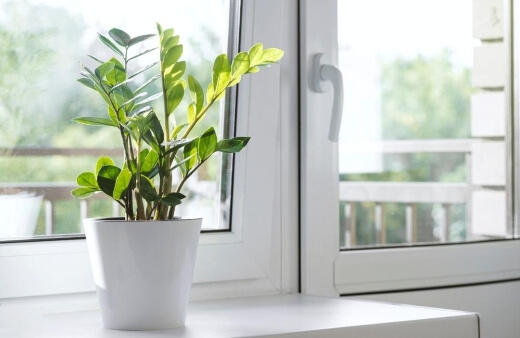
The Latin name for the plant is Zamioculcas zamiifolia but it is also known as Zanzibar plant, or ZZ plant for short. Zanzibar gem has its origins from the deserted land of Africa, where it thrives outdoors, however it is well suited for the indoor climate of Australia.
Before 1996, no one knew about this exotic plant outside Africa. However, with commercial propagation of the plant by Dutch nurseries, it started being distributed and becoming popular around the world, thereby entering our homes, offices, and living spaces.
ZZ plants grow from thick rhizomes that store sufficient amounts of water, making the plant drought tolerant. The water storing capacity allows it to survive indoors even after a few missed watering sessions from the owner.
The plant grows wide, glossy dark green leaves shooting from a stout under the soil. They are slow growers and take up to a few years to reach a few feet.
They can grow up to 3 to 4 feet tall depending upon the amount of light they receive. They do grow faster in the months of spring especially under adequate sunlight or even fluorescent lights making them a perfect in- house plant.
Zamzibar Gem ZZ Plant Varieties
At the beginning of its commercialization, the plant had no varieties and only was one of a kind. However new and intriguing varieties of Zanzibar gem have emerged in the later years. Some of the best and easy growing varieties are:
Zamioculcas zamiifolia ‘Raven’Zamioculcas ‘Raven’ are named after the birds because of their dark-colored leaves that almost look black in low light. They are fairly easy to care for and have a striking ornamental look to them, perfect for being a tabletop Plant. | 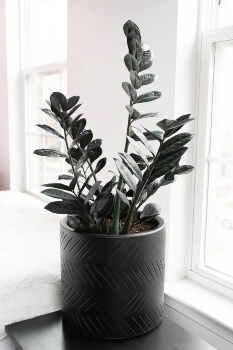 Source: bybrittanygoldwyn.com |
Zamioculcas zamiifolia ‘Dark Zamicro’As dark as the ravens, but takes up a small space to thrive with its smaller flat leaves. | 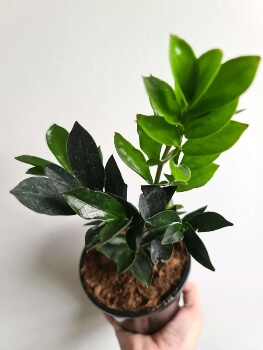 Source: verdantdwellings.com.au |
Zamioculcas zamiifolia ‘Zenzi’This variety is compact and only grows to a height of 2 feet. It requires the same maintenance routine as a normal ZZ plant but needs a much lesser space. |  Source: flowerpower.com.au |
Zamioculcas zamiifolia ‘Raven’

Source: bybrittanygoldwyn.com
Zamioculcas ‘Raven’ are named after the birds because of their dark-colored leaves that almost look black in low light. They are fairly easy to care for and have a striking ornamental look to them, perfect for being a tabletop Plant.
Zamioculcas zamiifolia ‘Dark Zamicro’

Source: verdantdwellings.com.au
As dark as the ravens, but takes up a small space to thrive with its smaller flat leaves.
Zamioculcas zamiifolia ‘Zenzi’

Source: flowerpower.com.au
Special Features
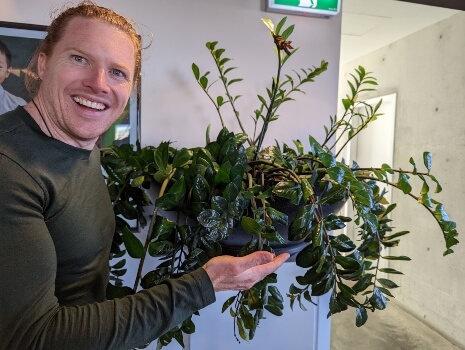
Nathan Schwartz of Aussie Green Thumb showing an example of a drooping zz plant due to lack of sunlight.
Make your surroundings even more beautiful with the Zanzibar gem. It is a flowering plant with flowers that are minuscule and grow at the base of the plant. However, it is very rare for the flowers to grow. The plant can only produce flowers when it is planted in its natural habitat.
A few studies reveal that ZZ plants are an excellent indoor air purifier and absorb pollutants and carbon dioxide leaving healthy and safe air for you to breathe.
How long can the plant survive?
Want a plant that you can pass down to generations? Zanzibar gem is the one! They are fairly tough, hard to kill, and can survive the blackest of thumbs. They are called heirloom plants for the very same reason.
How to Grow Zanzibar Plant
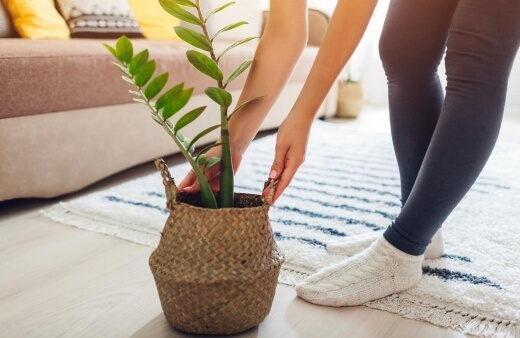
If the Zanzibar gem has so far piqued your interest then let’s discuss how you can easily grow and maintain them at your home now. Before sowing the seeds of the Zanzibar gem in the soil, place them in warm water for a day to germinate.
Once they are out and dry, they are ready to be placed in pots. Select a pot size of 8 to 12 inches and fill it with well-drained soil. These plants don’t require any special potting soil.
A standard potting soil is sufficient for your plant to thrive. The drought-tolerant nature of the ZZ plants allow them to survive infrequent watering.
It is recommended that it is watered once a week, when the potting soil is completely dried. Overwatering may lead to the rotting of roots.
The plants are well suited to a normal household environment. If you feel your indoor environment is drier than usual; you can place the plant over a water tray or near a humidifier.
The plant can thrive in a wide range of light intensities. However, it is recommended to place your pot near a window with low to medium sunlight for the best growth.
The plant cannot survive direct sunlight and extremely cold temperatures so please look out for that.
Propagating ZZ Plant

Zanzibar gem can be propagated through two ways: Rhizome dividing and stem cutting. The first method is the easiest and fastest to multiply your ZZ plant.
All you have to do is divide the rhizome and place them in two different pots to grow separately. The latter method takes about six to nine months for a new rhizome to bloom.
The method requires taking a sterilized sharp blade and cutting a part of the stem from a mature plant. Make sure that you select a healthy green plant. The cutting can be potted in the same way as you would sow a seed.
Planting Zanzibar Gem

Repotting plants from a smaller pot to a bigger one is important for the healthy growth of plants. Repotting is necessary when the plant has outgrown its container.
The most obvious sign is when the rhizomes start to push up against the soil and can be seen over the surface. Overgrown rhizomes also distort the shape of the potting container.
It is ideal to repot the plant during the spring or summer season. These seasons are active growing phases of plants, therefore plants are able to adapt better to new spaces and other changes. Make sure the new pot has drainage holes for a sufficient drainage system.
The plants grow faster and healthier when a large number of rhizomes are grown together. If you want some other plants to accompany your ZZ plant then here is a shortlist:
Snake plant, Aglaonema, Calathea, Kalanchoe, Cast Iron Plant, Ti Plant, Rattail Cactus, Ferns, Ficus, Mosses, Rhipsalis, Prayer plants, Sansevieria, and Tradescantia are some of the species that help ZZ plant obtain nutrients and flourish.
Among the list, Snake plant is no doubt one of our favorites and for good reason. Know more about them in our Moonshine Snake Plant Australian Guide.
Caring for ZZ Plant
Are you a beginner who struggles to take care of your plants? Fear no more since taking care of these Zanzibar plants needs minimum effort and that is what makes them the best home plants for beginners.
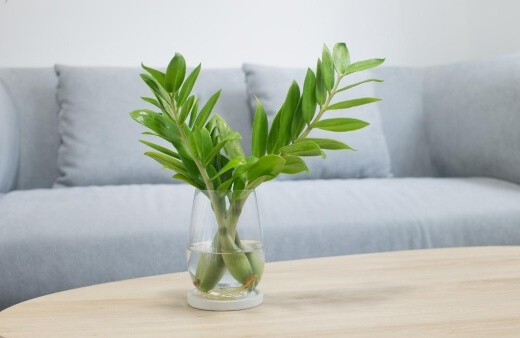
Here is a step-by-step guide to care for your ZZ plants.
Watering Zanzibar plant
Make sure you don’t overwater the plant as it leads to the rotting of roots. Water the soil enough to make moisture run out of the bottom holes of the potting container. Excess water must be discarded. It’s better to water less than overwatering.
Sunlight
Make sure the plant receives 6 to 8 hours of adequate indirect sunlight every day. Direct sunlight can burn the leaves. Too little sunlight can result in slower stunted growth.
Fertiliser
These plants don’t need regular fertilising. Fertilise the plants once or twice a year, ideally in the summer and spring seasons. It is recommended to use diluted indoor plant fertiliser. Read the warnings and instructions on the fertiliser carefully before using it.
Drainage
Plants require proper air circulation and drainage systems. Make sure the potting containers have sufficient holes for letting out excess water.
Temperature
Although these plants can survive a wide range of temperatures, avoid placing them in cold areas of your house as they can die of extremely cold temperatures or frosts.
Repotting
Repot the plant once a year after it has overgrown its container. It is preferable to mix perlite with the soil for extra drainage.
Pruning ZZ plant
Pruning allows new growth in plants. You can prune the plant by removing yellow leaves or cutting outgrown stems. Make sure you only prune the plant above the soil surface.
For a nice, clean prune, here is our review of the best secateurs in Australia.
ZZ Plant Problems, Pests, and Diseases

Common pests in Zanzibar gems are aphid infestations. It is evident by unusual yellow spots on the leaves of the plant. Aphids are usually hard to notice because they blend in with the color of the plant.
It is important that you take a closer look at the plant once in a while to diagnose any pest infestations. Some other types of pests include spider mites, thrips, caterpillars, and whiteflies.
These pests are harmful and feed on the leaves of the plant. You can spray or wipe the leaves with neem oil or mild insecticidal soaps to remove pests.
One of the biggest problems with this plant is root or tuber rot. Overwatering can immediately lead to the rotting of plants. Eventually dying as a result. The rot can be detected by yellow wilting leaves.
Nutrient deficiency is another problem with plants. This can lead to fewer leaves, yellow brittle petioles, and stunted growth. It is advisable to use organic fertilisers to overcome the nutrient deficiency.
Almost all parts of Zanzibar gem are poisonous and strictly non-edible. Make sure you wear gloves, goggles, and other safety equipment before pruning the plant. Wash your hands after every contact with the plant. Keep children and pets away from the ZZ plants.
Zanzibar Gem Frequently Asked Questions
How poisonous is Zanzibar gem?
Zanzibar gem, or the ZZ plant, is toxic, but mainly as an irritant. Skin contact can cause a rash, while ingestion can cause swelling, bowel irritation, and stomach cramps.
All parts of the plant are toxic, so wear gloves when handling or pruning your ZZ plant.
Is Zanzibar gem a good indoor plant?
Zanzibar gem is a great houseplant indoors and takes very little attention to grow well. Occasional watering, or growing in a humid room is often enough for these attractive indoor plants to thrive.
I tend to water my ZZ plant once a month, or less, as it’s in the bathroom and the soil retains reasonable moisture, so I only water it to feed it.
How tall does Zanzibar gem grow?
Zanzibar gem plants grow to around 5ft tall, which is pretty astonishing when you see them in garden centres. They are rarely sold at their full height as they are fairly slow growing (typically 20 cm per year at most).
In low light, Zanzibar gem won’t reach its full height but will grow quite happily as a self-contained plant that maintains its size for many years.
Is Zanzibar gem good for the bedroom?
Zanzibar gem is a great plant for the bedroom as it helps to remove toxins from enclosed spaces. It’s a slow photosynthesiser though, so won’t produce the same levels of oxygen as other bedroom plants like spider plants or English ivy.
Is Zanzibar gem an air purifier?
Zanzibar gem will help to purify the air, but at a lesser rate than most air-purifying plants. Personally, I sit with the firm belief that all plants help create better air quality in our homes though, and each has unique traits which remove one toxin or another.
If Zanzibar gem helps slightly, then it's worth growing!
What is the lifespan of Zanzibar gem?
Zanzibar gem plants tend to live for a minimum of 30 years if you take out the chances of fungal problems or growing conditions. In good conditions, they are long-lived house plants, which can grow outdoors in most of Australia all year round too.
Where should I place my ZZ plant?
Indoor, ZZ plants should be placed in bright but indirect light. In low light, they will grow more slowly, and the roots may become pot-bound without much top growth to show.
Outdoors, find a good sunny spot, with good ventilation and moist soil rich in organic matter. Some dappled shade in the afternoon is useful too.
Can I put Zanzibar gem in the bathroom?
Zanzibar gem is great for the bathroom, and your care routine will go from watering once a fortnight to sprinkling once a month as a result, and the plant will be happier for it.
The higher humidity is perfect for keeping glossier leaves, which adds to the overall health of the plant.
What happens if you touch Zanzibar gem?
Touching Zanzibar gem will not harm most people, but anyone with sensitive skin should use gloves when handling them as they are very irritating, and can cause rashes, eczema flare-ups, and risen lumps.
Do Zanzibar gem plants multiply?
Zanzibar gem naturally multiplies from an underground rhizome, creating new plants that can easily be propagated with or without water. Simply cut away the new shoots from the soil, with some roots attached, and replant them directly into a similar potting mix.
How do I know if my ZZ plant is happy?
Glossy, even foliage running in a track up each stem is a sure sign of a happy ZZ plant. The best way to tell if your ZZ plant is happy though is whether or not it is sending up new shoots.
Keeping one stem happy is one thing, but if it’s truly thriving, you’ll have new plants popping up from the rhizomes, ready to replant elsewhere.
Do ZZ plants attract bugs?
Zanzibar gem, the ZZ plant, has succulent leaves, filled with water and sap. Aphids adore it, as do mealybugs and thrips. If you notice them on indoor ZZ plants, wipe them off with neem oil, or dab rubbing alcohol onto the pests.
Outdoors, pests are rarely a problem, as native insects will help to keep infestations to a minimum.
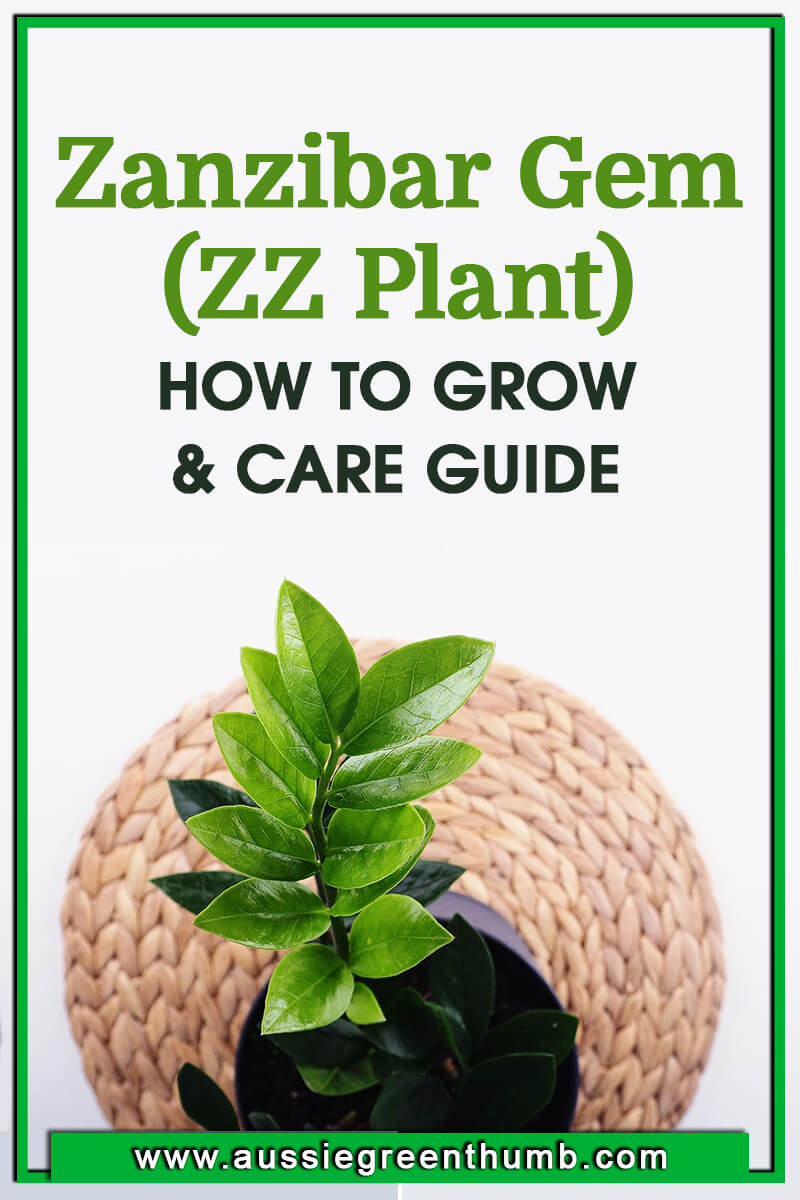
Wrapping Up Our Zanzibar Gem Growing Guide
Zanzibar gem is the perfect plant for balcony garden settings and it requires minimal maintenance effort. The two things special about it are its life longevity and air purifying nature. They can be passed onto generations.
Just keep in mind that these plants are strictly non-edible and can be harmful if swallowed. Keep the children and pets away from Zanzibar gem.
Published on January 13, 2023 by Gary Clarke
Last Updated on January 31, 2024

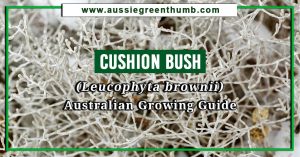

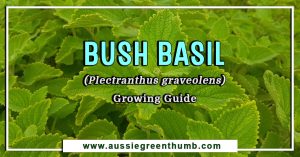

Hello and what a great website you have advising people of their gardening queries.
I have recently put four Zanzibar Gem plants into terracotta pots that have been sealed with liquid rubber ( two coats ) prior to planting. The reason for this is so that water does not evaporate quickly as terracotta is a very porous clay.
I used an organic potting mix and feel I chose the wrong brand ( Bunnings ).
After placing the plants into the pots with the new mix and given a small watering, I started to see that gnats were forming and flying through the air. I read how to rid them with a mixture and to put sand on top of the potting mix and this suffocates the gnats from breeding.
I'd like for the plants to grow in a quality potting mix without having to have sand on top, but also a potting mix that will not attract gnats from breeding. Or do I have to live with what I have got.
The plants themselves are really a great feature in the house and require little maintenance apart from controlled watering.
Can you advise me how to do this please.I am a 73 year old retiree and enjoy garden and plants.
I look forward to hearing your advice and suggestions.
Many thanks for your great contribution to gardeners throughout Australia.
Thank you.
Barry Moore
Hi Barry,
I’m so glad our content has proved useful for you and I’m sorry to hear about your gnat problem. These pests can be frustrating to deal with, especially indoors.
Firstly, it sounds like you prepped your pots perfectly for ZZ plants. Regarding the soil, most organic potting mixes are ideal for indoor plants so I don’t believe the soil is the issue here.
I’m assuming you got your plants from a nursery and unfortunately, many plants from nurseries can introduce pests like gnats into our homes. This is why I usually recommended quarantining plants from nurseries for a few weeks before introducing them to your existing indoor greenery.
To deal with the gnat problem, I would recommend repotting your plants into fresh soil and then starting treatment from there. If you do repot, try to gently rinse the roots under some water before repotting to get rid of potential larvae.
For the actual treatment, you have a few options.
We have just posted an article on this, Nathan Schwartz has a fungus gnat infestation as well, (he did intentionally let it get out of hand) here is our guide https://aussiegreenthumb.com/how-to-get-rid-of-fungus-gnats/
Nathan is doing a test currently on the different recipes and products to see which works best. But his test results won’t be live for about 4 weeks, so you can have a go at one of the recipes or try the methods below.
Hydrogen peroxide is usually a quick and effective way to get rid of gnat larvae, killing them on contact. A mixture of four parts water and one part hydrogen peroxide can be applied to the soil to soak it and kill existing gnat larvae.
Alternatively, if you prefer a more organic solution, neem oil diluted with water can also be applied to soil to kill larvae. Neem oil is available online or stocked in-store at most Australian nurseries.
Depending on the severity of the infestation, you may need to reapply these treatments every few weeks or so and eventually, you should be able to completely rid your plants of any infestation.
I would also recommend checking any surrounding plants for gnats as they can come back and bounce around the plants in your home.
I hope this information helps you get rid of the gnats Barry and I wish you all the best in cultivating your indoor landscape.
Happy gardening from team AGT!
Hello Gary and thank you immensely for your great in depth answer to my queries re gnats and Zanzibar Gem plants. I shall follow your instructions exactly as prescribed by yourself.
Congratulations on a very good service that you are providing to others who have green fingers.
I wish you well and great business success at aussiegreenthumb.
Thanks again Gary.
Barry Moore